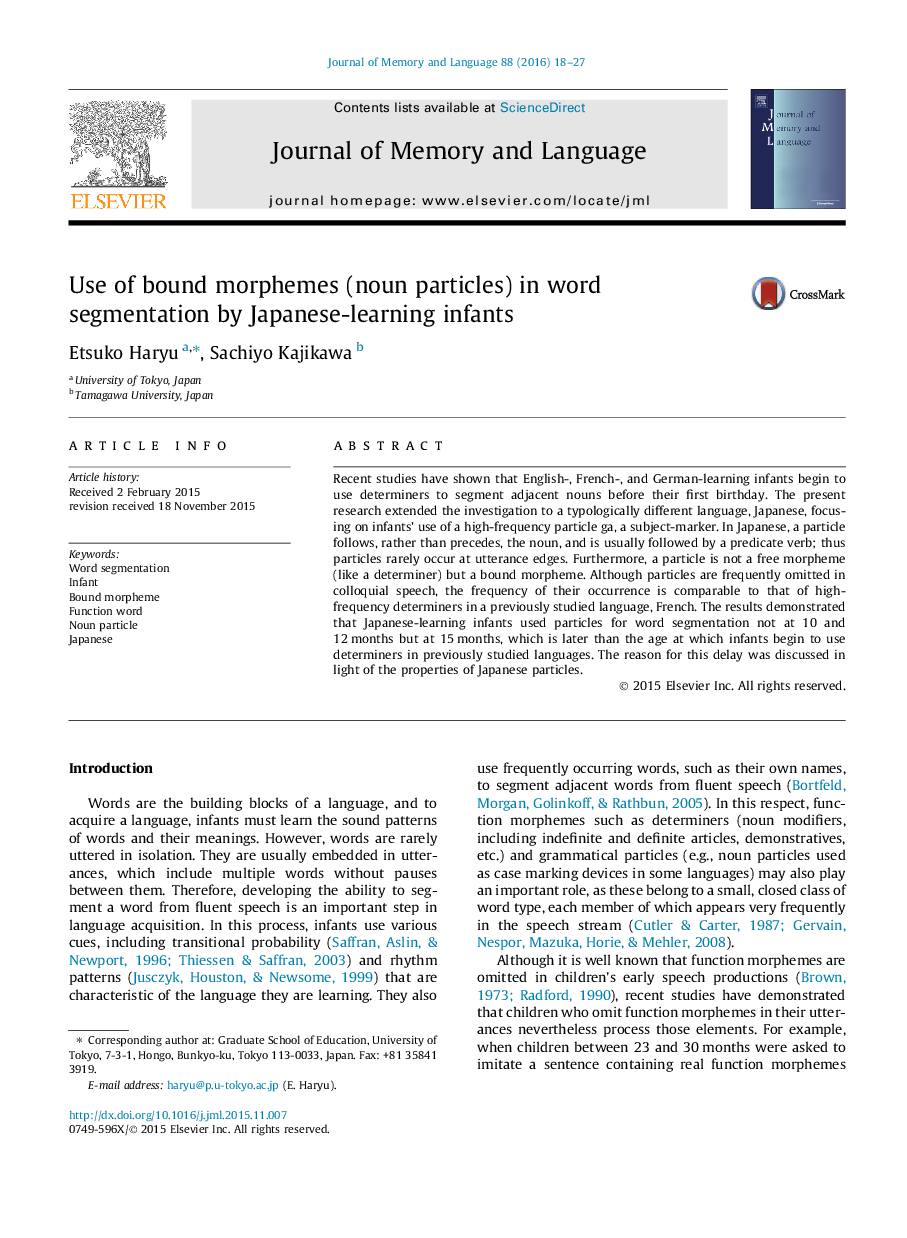| Article ID | Journal | Published Year | Pages | File Type |
|---|---|---|---|---|
| 7296915 | Journal of Memory and Language | 2016 | 10 Pages |
Abstract
Recent studies have shown that English-, French-, and German-learning infants begin to use determiners to segment adjacent nouns before their first birthday. The present research extended the investigation to a typologically different language, Japanese, focusing on infants' use of a high-frequency particle ga, a subject-marker. In Japanese, a particle follows, rather than precedes, the noun, and is usually followed by a predicate verb; thus particles rarely occur at utterance edges. Furthermore, a particle is not a free morpheme (like a determiner) but a bound morpheme. Although particles are frequently omitted in colloquial speech, the frequency of their occurrence is comparable to that of high-frequency determiners in a previously studied language, French. The results demonstrated that Japanese-learning infants used particles for word segmentation not at 10 and 12Â months but at 15Â months, which is later than the age at which infants begin to use determiners in previously studied languages. The reason for this delay was discussed in light of the properties of Japanese particles.
Keywords
Related Topics
Life Sciences
Neuroscience
Cognitive Neuroscience
Authors
Etsuko Haryu, Sachiyo Kajikawa,
